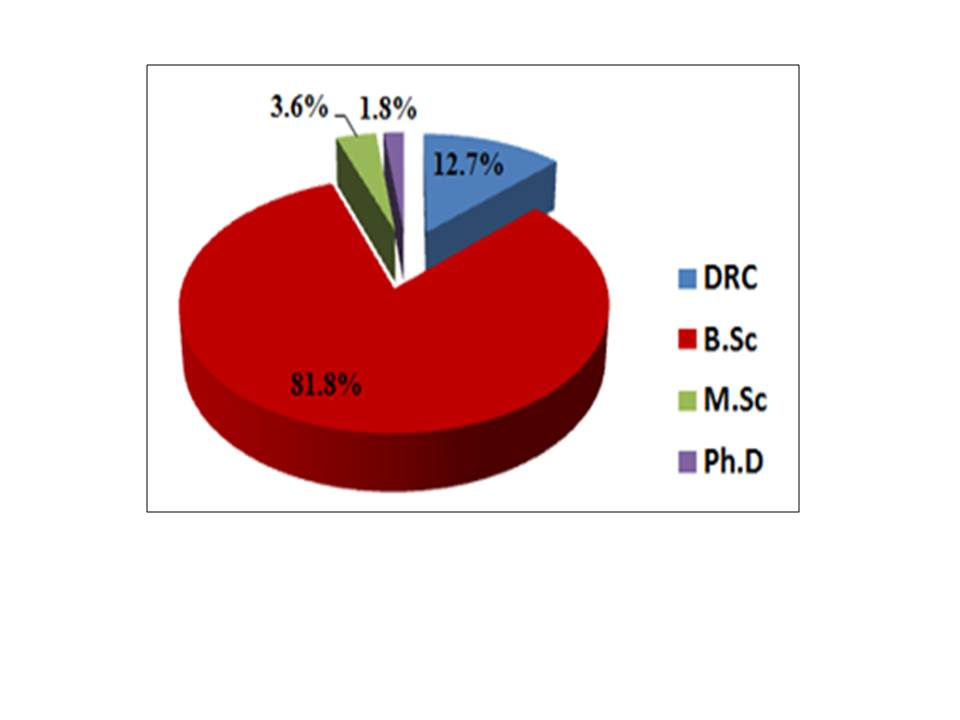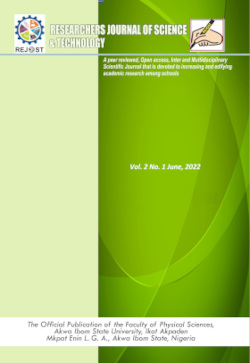Occupational Radiation Dose Absorbed by Radiographers in Port Harcourt, Rivers State
Keywords:
Absorbed Dose, Exposure Rate, Ionizing Radiation, Average Dose, RadiographersAbstract
Radiographers in Nigeria are exposed to very high radiation risk because of their great dependence on refurbished x-ray equipment. This study therefore seeks to assess the level of dose adsorption by some personnel in radio-diagnostic centres in Port Harcourt, Rivers State in the Niger Delta region from 2020 to 2022. The research was a cross-sectional prospective survey that assessed the amount of absorbed dose among individuals working in radio-diagnostic centres in Port Harcourt, Rivers State. The study focused on government-owned hospitals and private imaging centres in the city. The entire study population was eighty (80). The acquired data were analyzed using the Statistical Package for the Social Sciences (SPSS) software version 21.0 developed and distributed by SPSS Incorporated, Chicago, Illinois. Analysis of the results reveals that the mean doses received by radiographers in government hospitals and private imaging centres are 0.4882 mSv and 0.5463 mSv over the two-year period under investigation respectively. These correspond to mean annual doses of 0.2442 mSv for radiographers in government hospitals and 0.2732 mSv for those in private centres. From these findings, we conclude that the occupational radiation dose received by government diagnostic workers is less than that of private centres in Port Harcourt, Rivers State. By comparison, the average mean doses for both government hospitals and private centres are well below the occupational dose limit of 20 mSv set by International Commission on Radiological Protection (ICRP). This essentially suggests that there were no circumstances of overexposure for the radiographers during the time under investigation. A greater knowledge of radiation protection techniques, as well as the use of advanced equipment and technology available in this field, has contributed immensely to an improvement in the status of radiation protection in the centres investigated. It is however recommended that radiation protection and safety training should be included in the required training of radiology practitioners, particularly for graduates. In addition, there is need for regular continuing professional education (CPE) in this field
References
Borhani, P. and Alizadeh, S. (2009). The Opinions of physicians about Radiology Reports. Journal of Kerman University of Medical Sciences, 16(4), 343-351.
Chida, K., Kaga, Y., Haga, Y., Kataoka, N., Kumasaka, E., Meguro, T. and Zuguchi, M. (2013). Occupational dose in interventional radiology procedures. American Journal of Roentgenology, 200(1), 138-141.
Edith, N. J. and Philomina, O. C. (2019). Estimation of radiation dose rate of radiological unit personnels in some teaching hospitals in southern Nigeria. Radiat Sci Tech, 4(4), 22-28.
Ibitoye, F. I., Olukotun, S. F., Gbenu, S. T., Oladejo, O. F., Shittu, H. O., Fasasi, M. K. and Balogun, F. A. (2018). Investigation of gamma radiation shielding capability of two clay materials. Nuclear Engineering and Technology, 50(6), 957-962.
ICRP (1991). Recommendations of the International Commission on Radiological Protection (ICRP) publication 60. Ann ICRP 1991, 1-3
Ishiguchi, T. (2000). Radiation exposure to patient and radiologist during transcatheter arterial embolization for hepatocellular carcinoma. Nihon Igaku Hoshasen Gakkai zasshi. Nippon Acta Radiologica, 60(14), 839-844.
Jabeen, A., Munir, M., Khalil, A., Masood, M. and Akhter, P. (2010). Occupational exposure from external radiation used in medical practices in Pakistan by film badge dosimetry. Radiation protection dosimetry, 140(4), 396-401.
NBIRR, (2003). Nigerian basic ionizing radiation regulations. http://www.vertic.org/media/National%20Legislation/Nigeria/NG_Nigerian_ Basic_Ionizing_Radiation_Regulations_2003.pdf
Nzotta L. and Chiaghanam, W. (2010) Assessment of radiation Safety Measures in Some Selected Radio-diagnostic centers in Gombe, North Eastern Nigeria. Journal of Clinical Oncology, 8(2), 167-189.
Okaro, A. O and Njoku, J. (2010). Evaluation of personnel radiation monitoring in radio-diagnostic centers in south Eastern Nigeria. African journal of basic and applied science 2(3), 49-53.
Olowookere, C. J., Babalola, I. A., Jibiri, N. N., Obed, R. I., Bamidele, L. and Ajetumobi, E. O. (2012). A preliminary radiation dose audit in some nigerian hospitals: need for determination of national diagnostic reference levels (NDRLs). The pacific journal of Science and technology, 13(1), 487-495.
Osahon, O. D., Ojo, O. A and Ushie, P. O. (2017). Estimation of Radiation Absorbed Dose to Patients Undergoing Chest X-ray Examination in Four Government Own Hospitals in Nigeria. International journal of biophysics, 7(2), 24-32.
Razaq, A., Waqar, M., Soomro, Q., & Javed, M. A. (2016). Evaluation of radiation workers occupational doses for newly established medical center NORIN Nawabshah in Pakistan. J Med Phys Biophys, 3(1), 61-65.
UNSCEAR (2012). Annex B, Uncertainties in risk estimate for Radiation induced cancer. UNSCEAR

Downloads
Published
How to Cite
Issue
Section
License
Copyright (c) 2024 Researchers Journal of Science and Technology

This work is licensed under a Creative Commons Attribution-NonCommercial-NoDerivatives 4.0 International License.




